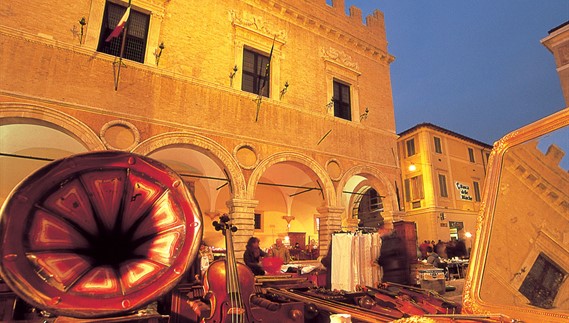The great wealth which the museums of Pesaro and Urbino keep tells the story of this area, its art and civilization. Here, museums are not only the place of deposit for priceless objects intended for a small number of people, but culture workshops at the disposal of the entire community. Based on the study of users' habits, a diverse museum offer has been created. So, for example, children have a program adapted to their needs thanks to the offer of museum pedagogy, which is closely related to school tourism. Furthermore, technology enables visitors to start their tour with personalized itineraries on audio-video guides that can be downloaded from the regional website or obtained at the info-points.
The museum network includes 13 archaeological museums, 20 art museums, 15 contemporary art collections, 26 demographic-ethnologic-anthropological museums and 13 science museums. Among the archaeological museums especially interesting are the museum in Fossombrone, Roman Forum Sempronii along the Via Flaminia and archaeological museum in the town Fano Fanum Fortunae that keeps objects from the Paleolithic to the Roman period (4th - 5th century BC). The Oliveriano Archaeological Museum in Pesaro is known for its collection of bronzes, lucerna, coins and statues, as well as the Stele di Novilara, a very important find from the Iron Age presenting a large oar-powered vessel.
The Maritime Museum "W. Patrignani" in Pesaro is housed in Villa Molaroni (1924) and tells the story about life in the port of Pesaro and people for whom the sea is a source of life, whereas the rich library collection reconstructs maritime history.
Among the ethnographic collections is the Rope and Brick Museum (Museo della Corda e del Mattone) in Orciano, two products the local economy rested upon, whereas the museum display speaks of the importance of such traditional crafts. In Sant’Ippolito is the Regional Sculpture Museum (Museo del Territorio Arte degli Scalpellini) with a collection of stonemasonry work, true works of art also visible on the house facades.
In Lamoli di Borgo Pace is the Museum of Natural Colors (Museo dei colori naturali), a specific itinerary through archive documents, herbarium of the most important color essences, development and research laboratory connected with the extraction of plant dyes, among which is guado, used for the extraction of indigo, a valuable and sought-after pigment.













